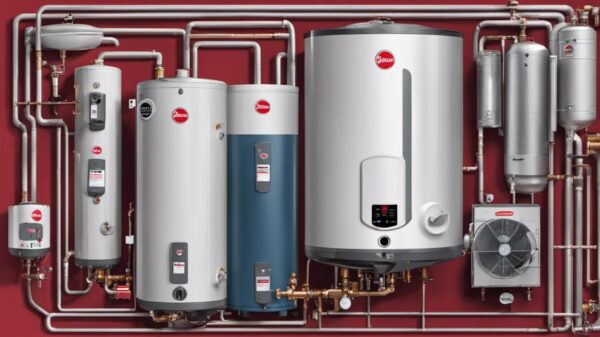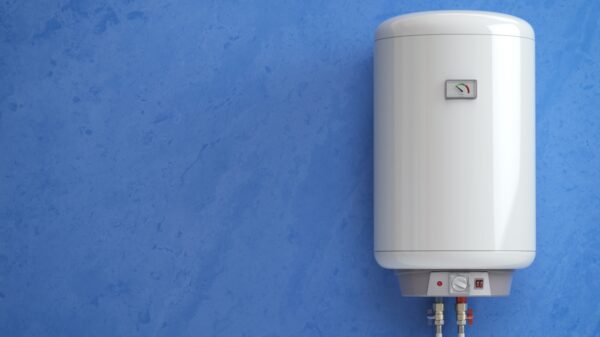Understanding the Common Causes of Low Water Pressure
In homes and businesses across the country, water pressure plays a crucial role in the routine of day-to-day activities. Whether we’re washing dishes, taking a shower, or watering the lawn, we often take for granted the strength with which our water is delivered. But have you ever encountered a situation where the normally robust stream trickles out, leaving you puzzled? This phenomenon of low water pressure can be frustrating and impact our usual tasks significantly. This article delves into the common causes of low water pressure – from plumbing system issues to supplier anomalies, faulty pressure regulators, and hot water system problems.
Examining the Plumbing System
Bracing for an exhilarating dive into the fascinating world of plumbing! Hold onto your pipe wrenches, folks, it’s time for an exploration of how flaws in our beloved home’s intricate plumbing systems contribute to low water pressure, a nemesis to any respectable hobby plumber.
We all know the frustration that low water pressure can bring. Whether it’s a meekly trickling shower spray or a kitchen sink that hardly manages a dribble, low water pressure can turn everyday tasks into aggravating chores. Understanding the causes, often found deep within the heart of our plumbing systems, is our starting point toward a more satisfying water flow.
Foremost on our list of suspects are leaky pipes. Having sprung a leak, vital water escapes before reaching its intended destination, resulting in low pressure. Moreover, unsure about the urgency of repairing a minor leak? Remember that leaks can lead to significant water damage over time and can drastically reduce the efficiency of the water heating systems, soaking up more energy and pocket-draining costs.
Besieged by severe winters or harsh water chemistry? Say hello to pipe corrosion, a surreptitious villain of water pressure. Over time, metal pipes can corrode, depositing debris that restricts water flow and, in effect, reduces pressure. Regular inspection by a trained eye can help in early detection and save your home from becoming a low-pressure zone.
Plumbing systems also bristle in the face of mineral buildup. Hard water, a bane to pipes and plumbing alike, deposits mineral residues, clogs the system, and results in low water supply pressure. Installing water softeners or flushing systems at regular intervals can help in the mitigation of this stubborn problem.
Remember, every plumbing system is akin to a finely tuned symphony, and each element needs to harmonize perfectly for peak performance. This includes the pressure regulator, an often-overlooked hero that maintains water pressure at acceptable levels. A malfunctioning pressure regulator could indeed be the culprit behind low water pressure in a home. Checking and adjusting the pressure regulator in time can prevent hours of frustratingly slow showers.
Last, but not least, outdated fixtures and designs may be charming but lack efficiency, resulting in low water pressure. Indeed, upgrading your old plumbing fixtures may just be the magic touch required to uplift your water pressure woes.
To all the fellow weekend warriors, remember: love for a home goes beyond decor and aesthetics. It extends deep into its veins – the plumbing system. A well-adjusted, efficient plumbing system is intrinsic to a welcoming home. After all, who doesn’t appreciate a heartening, high-pressure hot shower at the end of a long day? Next time you face disappointing water pressure, it’s not just a minor inconvenience, but a call to arms to delve deep and address the health of your home’s plumbing system. An informative journey into your plumbing can often unearth and address unsung issues, ultimately leading to the delightful crescendo of a high-pressure water flow, a plumber’s symphony indeed. So, grab your inspector’s hat and your handy toolkit to chase the mystery of low water pressure to its source, one pipe at a time!
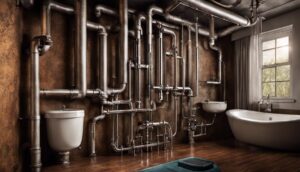
Water Supplier Issues
Is Your Water Company the Unsuspected Cause behind Low Water Pressure?
If you’ve been dealing with the frustration of low water pressure, you’ve likely delved into the common culprits – leaky pipes, corroded conduits, mineral sediments, flawed pressure regulators, and strains of antiquated fixtures. But have you thought about your water supply company? Shockingly, the problem could be coming from the very entity tasked with delivering your water supply!
Understanding the Water Company’s Role in Pressure Management
Water companies are responsible for creating and maintaining the correct pressure throughout their water distribution systems. They utilize water reservoirs, pumping stations, and an intricate network of pipes to distribute water to our homes, maintaining a steady pressure. Occasionally – through planned works, temporary cuts, or unexpected disruptions – the water company might inadvertently become the source of your low water pressure woes.
Diagnosing the Involvement of the Water Company
Before pointing fingers, it’s crucial to diagnose if your water company is indeed to blame for the low pressure. First, check if the low water pressure is affecting the entire house or is localized to a particular point. If it’s isolated, the issue is likely within your plumbing system. However, if the problem is widespread, it might be worth giving the water company a call.
Furthermore, explore the water company’s website. Typically, they share announcements about any maintenance works or service disruptions. It’s also smart to test the pressure during different times of the day. If it fluctuates, it may indicate peak demand times affecting the supply in your area.
Understand the Zoning effect on Pressure
Believe it or not, the geographical factors of your home play an imperative role in water pressure. Water companies often use a “zoning” concept, dividing the distribution system into zones to manage the pressure effectively. Living at the end of a zone or on higher grounds can sometimes result in lower water pressure.
Future planning – Engage and Communicate with your Water Company
A miscommunication or lack of knowledge about the service provided by your water supply company can often result in persistent low water pressure. Liaising frequently with the water company can help ideate proactive measures. Also, advocacy for enhanced supply in areas with lower pressure falls into this engagement parameter.
When the curtains of ambiguity fall, there’s comfort in knowing the reasons behind low water pressure, and a solution often reveals itself. Diverse as the causes may be, it’s essential not to overlook a potential source – your water supply company. So, be vigilant, adopt a systematic approach, liaise with your water company, and you might have solved that persistently nagging problem of low water pressure. Your showers never felt better!
Faulty Water Pressure Regulator
Deciphering the Symptoms of a Defective Water Pressure Regulator
Your home’s water pressure regulator plays a vital part in safeguarding your plumbing from overpowering water pressure. But what happens when this sentinel fails or malfunctions? Its potential failure could constitute an entirely new set of challenges for your water supply. Understanding its telltale signs can mean the difference between a minor adjustment and a serious, costly overhaul.
First off, random fluctuations in water pressure could indicate a faulty regulator. If showering feels like you’re intermittently under a waterfall or a drizzle, the water pressure regulator might no longer be efficiently maintaining equilibrium. Weekend warriors might want to DIY the repairs, but remember, there’s no substitute for professional intervention.
Another sign is the infamous dripping faucet. The continuous dripping could be due to overpressure caused by a defective regulator, which results in water trying to escape through any feasible outlet. Faucets, among the household’s most frequently used fixtures, become easy channels for this excess, resulting in that maddening drip, drip, drip.
Skyrocketing water bills are another red flag of a failing pressure regulator. An abnormally high bill could indicate leaking or broken pipes, stemming from excessive water pressure. Although several factors can contribute to increased water usage, if you notice an escalating trend without corresponding changes in usage patterns, it might be time to check your regulator.
Banging pipes, also known as water hammer, are not only frightful but may also signify regulator issues. Overpressure in pipes can cause water to crash against the pipe’s walls, consequently leading to this water-hammer effect. It’s part phantom menace, part plumbing problem.
Then, you have the case of the sprouting garden hose. A garden hose isn’t meant to resemble a gushing whitewater river. If it does, the chances are high your friendly neighborhood water pressure regulator isn’t regulating correctly.
Finally, it is essential to note that faulty regulators can often lead to damage to appliances. If your washing machine, dishwasher, or water heater shows repeated breakdowns or malfunctions, excessive water pressure may very well be the antagonist. A tiny mechanism’s failure could invoke a domino effect on other appliances’ performance.
So, there you have it, folks! Each of these symptoms could be associated with a malfunctioning water pressure regulator. More than just maintaining a steady water flow, a well-functioning regulator is pivotal in ensuring the longevity of your plumbing system. Diligently observing these signs and seeking the help of professional plumbers at the onset of the problem can save one from bigger headaches down the line.
Remember, water plays a central role in our lives. One must not take it lightly (or apply too much pressure). It’s time we appreciate our unsung household heroes, like water pressure regulators, and give them the care and maintenance they deserve. After all, the sound of steady, gentle water flowing from your faucet is much more than just soothing—it’s the sound of a well-regulated home!
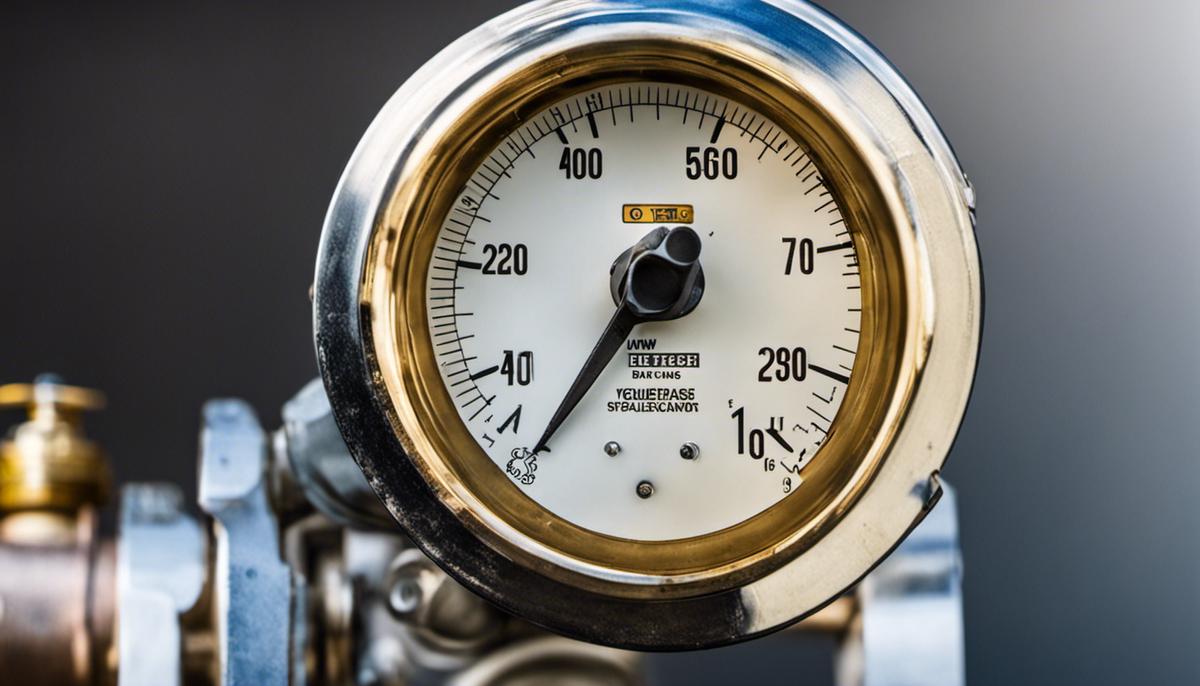
Hot Water System Problems
What hasn’t been mentioned yet is another crucial aspect that might be responsible for low water pressure at your home – your hot water system. The complex system, if not maintained well, can cause headaches, and low water pressure is one of those.
First off, the hot water system is multifaceted, with multiple components working synchronously to provide your house with consistent heated water. A main component of course being the hot water heater. If the heater falls short in performing optimally, this could result in low water pressure.
Additionally, certain types of heaters, particularly the tankless ones, are notorious for delivering water at a lower pressure than their tanked counterparts do. If you’re considering getting a tankless model, make sure to select one that can manage the demands and pressure requirements of your home.
Moreover, a component in the hot water system that can compromise water pressure is the shut-off valve, installed to halt the flow of water when necessary. If the valve isn’t entirely open, it can constrain the water flow, thus reducing the pressure. Over time, these valves can age or get accidentally nudged, making them partially close. A careful regular check for the shut-off valve position can prevent this from impacting your water pressure.
Sediment deposits within the hot water system – now, this is a major culprit behind low water pressure. These deposits can clog up pipes, reducing water flow and pressure. Regular maintenance to flush out these sediments from the system can increase the longevity and efficiency of your hot water system.
Don’t forget about the heat traps, those clever components in your hot water system that prevent convection. They are designed to let water flow into the tank but not the other way around. The issue? Sometimes, they get defective or malfunctioning and restrict the water flow causing a drop in water pressure.
Troubleshooting your hot water system might require some technical knowledge and tinkering prowess, but it also gives us the sense of control and satisfaction of managing and maintaining our own homes. Addressing problems at their root cause can save resources down the line and ensure the comfort and efficiency of your domestic life.
Lastly, always remember, when in doubt, don’t hesitate to call in the professionals. Their expertise can save you time and stress and keep your plumbing humming along. It’s all about accumulating knowledge, applying a bit of elbow grease, and enjoying the fruits of a well-maintained plumbing system – a perfect hobby for the hands-on homeowner.
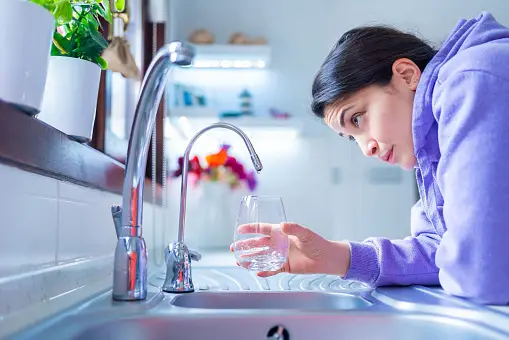
Conclusion
When all is said and done, understanding and addressing low water pressure is essential for the comfortable running of any household or business. From closely examining the state of the plumbing system and engaging with the water supplier to understand their role, to inspecting possible faults in the water pressure regulator and hot water system, several factors could contribute to reduced water pressure. By identifying and fixing these, you can ensure water is always flowing freely when you want it, leaving no room for frustration. Hopefully, this article has equipped you with a clear understanding of the key culprits behind this issue.



